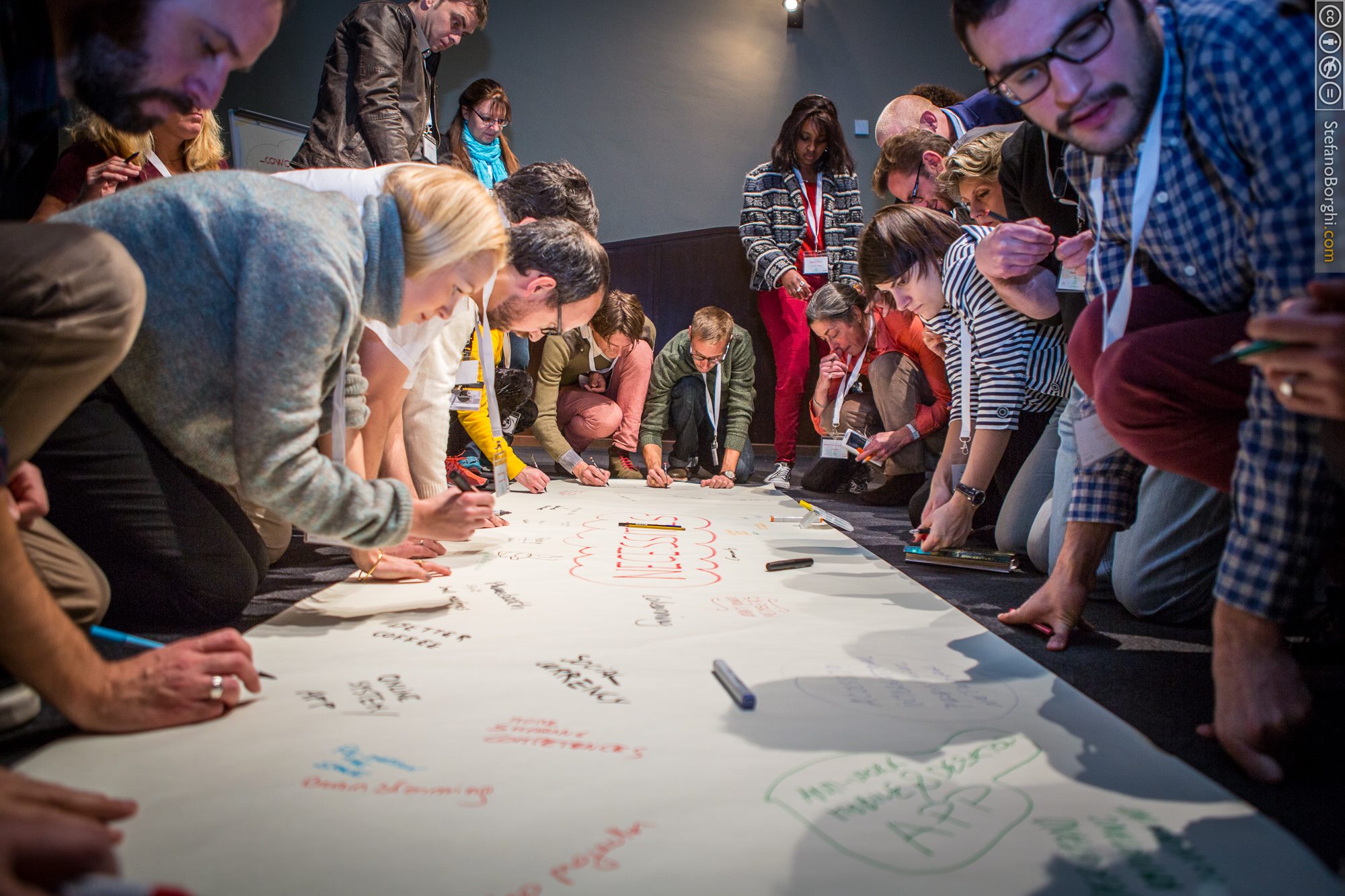Coworking Europe Conference 2015 is coming!
The Coworking Europe Conference is just around the corner. On 11th, 12th and 13th November, Milan will take centre stage of the coworking scene, when an expected 350+ space managers and coworking enthusiasts from Europe, United States, Canada and many other countries will take to the Italian metropolis. This is the sixth occasion that the event has taken place and it has become one of the main benchmarks for keeping up to date with the movement's evolution, trends and new models. It is also the perfect opportunity for networking with other space managers.
Global Enterprise, Proteina and the Comune di Milano have partnered up this time to create the most insightful event in Europe regarding the rise of coworking and its impact on entrepreneurship, innovation and the future of the workplace.
The event will be structured in the same way as other years. The first day will consist of panels with guest speakers. The panel topics range greatly, and include: New coliving models, digital nomads, the future of coworking, coworking in Africa, and coworking and corporations, to name just a few. The second day will be organised around the unconference format, in which conference participants can suggest topics for debate. Groups will then be formed and the topics are discussed around different tables. This day is a good opportunity for putting forward topics that you believe could be of interest to share and compare with the rest of the community participating in this event, so don't be shy! The last day will include 2-hour workshops given by experts. The workshop themes are community building, designing your space and how to work with sponsors.
These events are great for getting to know other people involved in coworking and obtaining information about everything that's going on at the moment. It will definitely be interesting to find out the latest results from the Coworking Survey 2015 by Carsten Foertsch from Deskmag.
Although you may still come across people who answer you with "CO-what?" when you talk to them about coworking, the movement has matured a lot in recent years. More and more people are becoming used to the term and are showing interest in the concept. As part of the sharing economy boom, coworking is a response to a new way of working that pays special attention to building community and the interactions that are produced in these spaces. Coworking isn't just about sharing an office or workspace; it's about belonging to a coworking space and feeling like part of a group in an environment where everybody is willing to collaborate.

Coworking Europe 2014 Lisbon. Photo source: Stefano Borghi
Specialization is another trend seen in the coworking ecosystem, where we can find spaces especially for chefs, female entrepreneurs, makers, startups, writers, etc. These spaces create their community based on very specific profiles that feed off one another by collaborating in different projects together.
What's more, the movement is also experiencing a growth in space networks. WeWork has been a hot topic in the past year given the investment it received. Other networks, such as Nextspace, HeraHub, Deskhub, Grind or CoCo have spaces throughout the USA. The number of member spaces in the Impact Hub network also continues to grow, which is centred on social impact initiatives.
If you're thinking about attending the conference, you can find some tips to make the most of the event in this post on our blog. Don't forget to sign up for the tours that the CoPass team usually organise, as they're a great chance to find out more about the local coworking ecosystem. And if you still haven't made your mind up about accommodation, take a peek at the CoPass Camp. :)
You can get more information and book your ticket on the Coworking Europe official website.
Related stories
Liz Elam: ‘Community is the number one amenity in coworking spaces’
A household name in the global coworking industry, Liz Elam, is the founder of one of the world’s best coworking event series: GCUC. Liz’s coworking roots began in 2010, when she established Link Coworking – a welcoming, affordable, and professional coworking space – in her hometown of Austin, Texas. Link Coworking achieved incredible success, expanding across three locations and becoming the fourth-largest coworking brand in Austin. It was sold in 2019, making Liz the first woman globally to exit a coworking brand.
Key Takeaways from the Coworking Alliance Summit 2025
Gathering online for the Coworking Alliance Summit last week, members of global coworking alliances, coworking spaces, and community leaders came together to navigate global issues, strengthen ties across the coworking industry, and work collectively towards future goals.
5 Ways to Reduce Noise in Open Offices & Coworking Spaces
Some people like working against a background of noise, while for others it’s their worst work nightmare. The truth is, our relationship with noise depends on our own preferences and the nature of our work.
Key takeaways from the Workspace Design Show 2025
London’s Workspace Design Show is undoubtedly one of the best coworking events of 2025. For one, the exhibition (held at Islington’s Business Design Centre) features a host of innovative and creative workspace design solutions tailored to the needs of modern workplaces.
What Is Workplace Management and Why Does It Matter?
There has always been a need for workplace management – the process of organising and optimising physical spaces, resources, and operations to support people’s needs. But, as 28% of UK working adults were reported to work in a hybrid capacity last autumn (by the Office for National Statistics), the question of ‘why workplace management matters’ is more critical than ever. Let’s look at the workplace management benefits for your operations.
10 Smart Goals for your Coworking Space: How to Set & Achieve Business Objectives
Coworking is synonymous with creativity, collaboration and productivity. Businesses and freelancers love coworking spaces because (by surrounding themselves with fellow workers) they’re more likely to achieve their goals. The coworking environment, while social, is set up to facilitate focused, distraction-free working.
The Best Coworking Events in 2025: Must-Attend Gatherings for Professionals
Managing coworking spaces is an all-encompassing role, often leaving operators, owners, and community managers with little time to focus on personal growth or draw inspiration from others.
10 Award-winning Coworking Space Designs: A Comprehensive Guide
Vibrant, contemporary workspaces create an undeniable ‘wow’ factor. Textured designs and ambient lighting make spaces feel warm and cosy, while natural elements and biophilic design features have literal mood-boosting properties.
The Power of People: Building a World-Class Team in Coworking
Coworking spaces thrive on the “co” – the collaborations, connections, and community – that can be formed within a flexible workspace. In fact, community activation is what transforms shared workspaces from mere buildings into vibrant, thriving hubs that empower people in their professional lives and create meaningful community experiences.
6 Powerful Storytelling Techniques to Elevate Your Coworking Space
If you've been reading about coworking space design recently, you've probably come across an article or two that mentions narrative design and wondered what exactly it is and how it differs from traditional interior design, as well as how it can be used to improve design.

